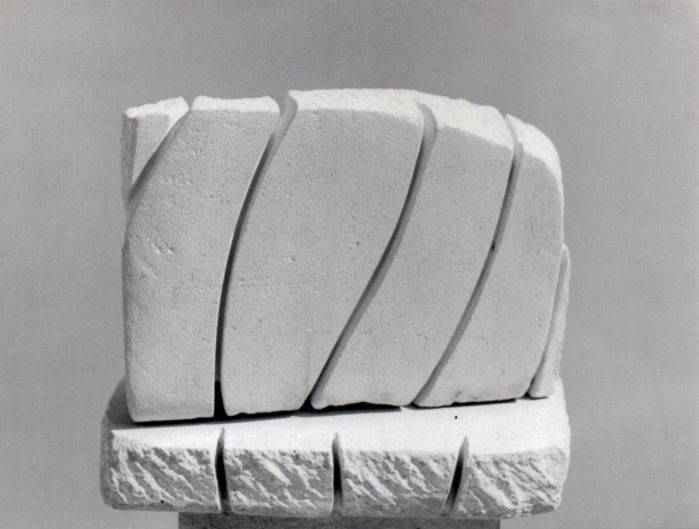Kim Lim developed a strong reputation both for her iconic sculpture and for her long career in printmaking that stemmed back to her training in Slade School of Fine Art in London in the late 1950s. Her earliest print work explores modulations of blocks and lines, which also transpired into wood sculpture using basic linear patterns. From the 1980s onwards, Lim’s print work and sculpture explored more natural forms by taking inspiration from the visual culture of various archaic civilisations, such as ancient Greece, ancient China and ancient South Asia. Prior to her passing in 1997, Kim Lim worked primarily in stone while also continuing to create prints. Her sculpture bears the remarkable quality of lightness and softness by evoking natural elements such as wind, air, water and light through an otherwise contradictory material.
Born in Singapore in 1936, Kim Lim spent much of her early childhood in Penang and Malacca. After finishing school in Singapore at the age of 18, she began her art training at Central Saint Martins in London (1954-1956) in wood-carving and at the Slade School of Fine Art (1956-1960) in printmaking. She has had solo exhibitions at the Yorkshire Sculpture Park, Wakefield, UK; Waddington Galleries, London; National Museum of Art, Singapore; Southampton Museum and Art Gallery; Tate Gallery, London; and Museum of Modern Art, Oxford, among others. She was also featured in many group exhibitions, including at the Musee d’Art Moderne de la Ville, Paris; Nagoka Museum, Japan; Hayward Gallery, London as well as in numerous biennales around the world. Her works are shown in collections at the Nagaoka Museum of Modern Art, Japan; Tate Gallery, London and Liverpool; National Museum of Art, Singapore; Fukuyama City Museum, Japan; Arts Council of Great Britain; Middelheim Museum, Belgium; Southampton City Art Gallery; and the Contemporary Art Society, London. Kim Lim died in 1997.
